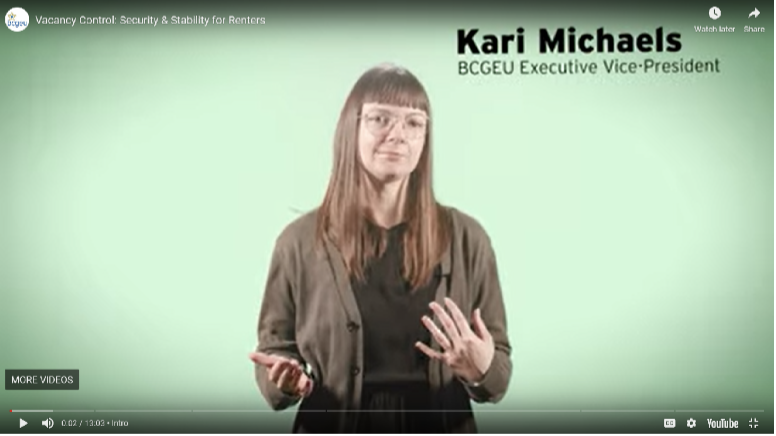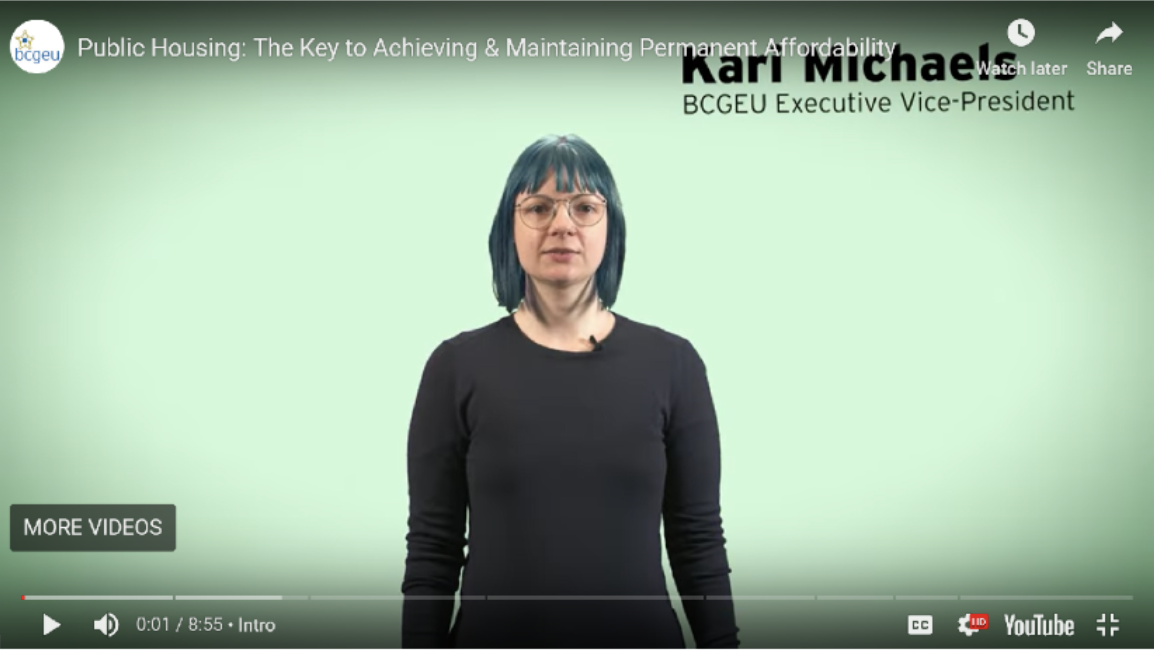Videos - GVAT Housing Co-lead Explains Real Rent Control & Public Housing
In the first video, Kari Michaels, GVAT’s Affordable Housing co-lead and Executive Vice President of the B.C. General Employees’ Union (BCGEU), explains what Vacancy Control, (also known as Real Rent Control), is and why we need it.
The BCGEU, which produced these videos, explains:
“Vacancy control is a form of rent control that ties allowable rent increases to a housing unit, rather than to individual tenancy agreements, which is the current model of rent control in B.C.
The current model of rent control incentivizes landlords to end long term tenancies in order to seek higher rents in tight rental markets. This type of economic displacement hits low and fixed income tenants the hardest, and contributes to the province’s homelessness and mental health crisis. Tying rent control to units would remove the economic incentive to end tenancies and likely decrease the number of “renovictions” and other types of bad-faith evictions.
The current model of rent control also undermines the province’s efforts to increase the stock of affordable, public, and non-profit housing. British Columbia lost 15 affordable private units (renting for $750 or less) for every new affordable unit built between 2011-2016. Vacancy control would immediately and universally moderate the rate of rent increases across the province, which will help to ensure security of tenure for tens of thousands of renters who are waiting for affordable public housing to be built.”
Watch this 13-minute video to learn much more!
In the second video, Kari explains that public housing is key to achieving and maintaining permanent housing affordability. The BCGEU states:
“The private sector cannot provide the housing at the levels of affordability that we most need, because it relies on a for-profit model. Affordable housing that is funded and coordinated directly by government can be delivered much more quickly and reliably than through partnerships and mixed arrangements with the private sector.
While the private sector can play an important role in construction, the ownership, operation and financing of new affordable rental housing should remain firmly in the public and non-profit sectors. This can help ensure that it remains affordable – as a public good – forever.
There are multiple options for structuring the investment and the resulting public management framework—be it through purpose-built, publicly owned units, or a mixed approach involving other tenancy models such as co-ops and community land trusts.
Government investment in rental housing construction can be structured in a self-sustaining way, and, where needed, as self-supported debt (for example, public and non-profit housing projects will repay up-front capital costs with ongoing rental income). Lower interest rates and longer amortization available to government, combined with pricing based on a break-even model, would allow public and non-profit providers to charge below-market rents.”
Watch this 9-minute video, with new and improved hair, to learn much more!


